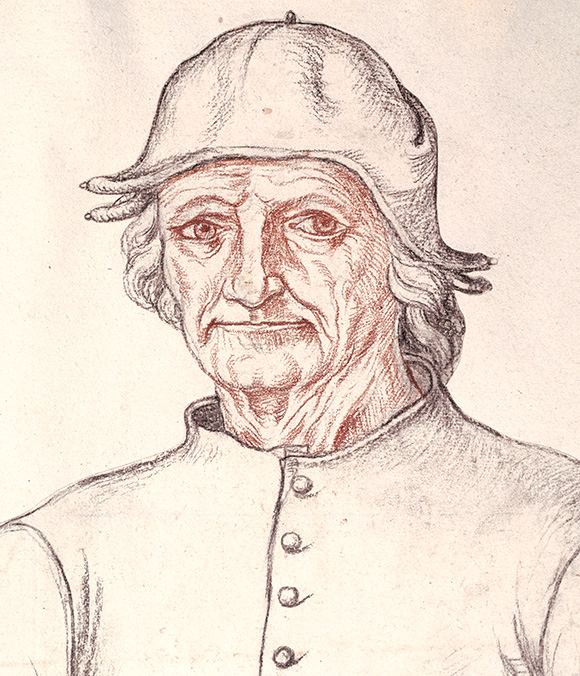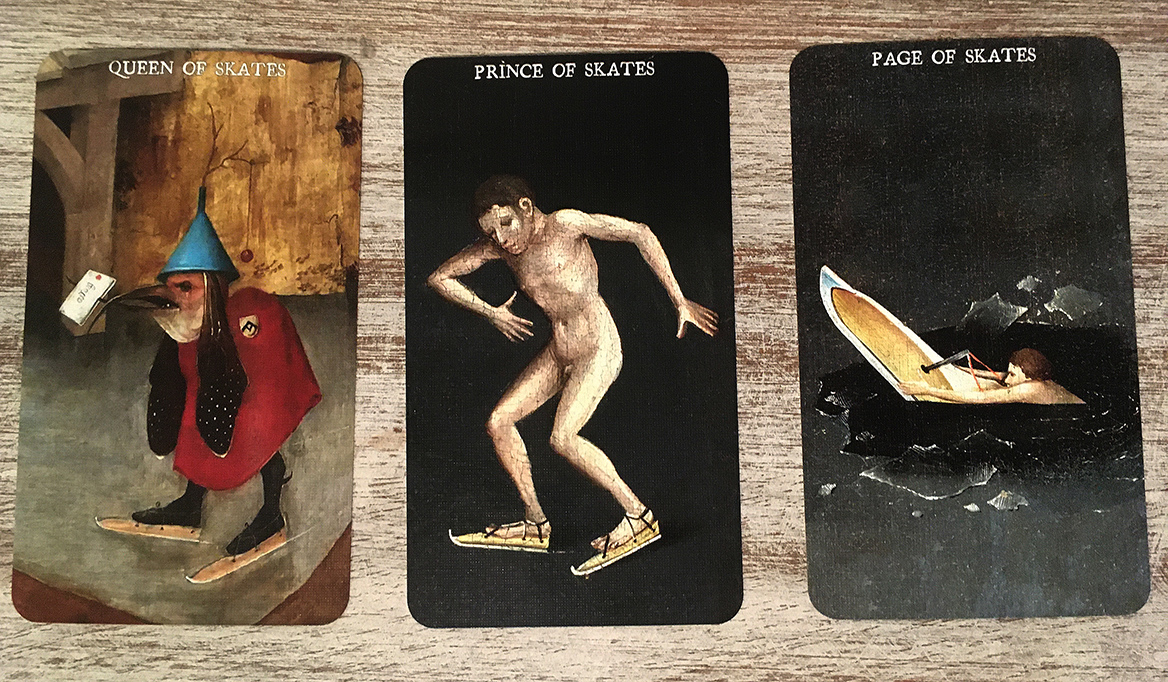Hieronymus Bosch
Hieronymus Bosch (born Jheronimus van Aken c. 1450 – 9 August 1516) was a Dutch/Netherlandish painter from Brabant. He is one of the most notable representatives of the Early Netherlandish painting school. His work, generally oil on oak wood, mainly contains fantastic illustrations of religious concepts and narratives. Within his lifetime his work was collected in the Netherlands, Austria, and Spain, and widely copied, especially his macabre and nightmarish depictions of hell.
Biography
Little is known of Bosch's life, though there are some records. He spent most of it in the town of 's-Hertogenbosch, where he was born in his grandfather's house. The roots of his forefathers are in Nijmegen and Aachen (which is visible in his surname: Van Aken). His grandfather Jan van Aken (died 1454) was a painter and is first mentioned in the records in 1430.
He became a popular painter in his lifetime and often received commissions from abroad. He left behind no letters or diaries, and what has been identified has been taken from brief references to him in the municipal records of 's-Hertogenbosch, and in the account books of the local order of the Illustrious Brotherhood of Our Blessed Lady. Nothing is known of his personality or his thoughts on the meaning of his art.
Paintings
Bosch produced at least sixteen triptychs: of them, eight survive fully intact with another five surviving in fragments. Bosch's works are generally organised into three periods of his life dealing with the early works (c. 1470–1485), the middle period (c. 1485–1500), and the late period (c. 1500 until his death). According to Stefan Fischer, thirteen of Bosch's surviving paintings were completed in the late period, with seven attributed to his middle period. Bosch's early period is studied in terms of his workshop activity and possibly some of his drawings.
Bosch sometimes painted in a comparatively sketchy manner, contrasting with the traditional Flemish style of painting in which the smooth surface—achieved by the application of multiple transparent glazes—conceals the brushwork. Bosch's paintings with their rough surfaces, so called impasto painting, differed from the tradition of the great Netherlandish painters of the end of the 15th, and beginning of the 16th centuries, who wished to hide the work done and so suggest their paintings as more nearly divine creations.
Attribution of works
The exact number of Bosch's surviving works has been a subject of considerable debate. His signature can be seen on only seven of his surviving paintings, and there is uncertainty whether all the paintings once ascribed to him were actually from his hand. It is known that from the early 16th century onwards numerous copies and variations of his paintings began to circulate. In addition, his style was highly influential, and was widely imitated by his numerous followers.
About twenty-five paintings remain today that can be attributed to him. In the late 16th century, Philip II of Spain acquired many of Bosch's paintings. As a result, the Prado Museum in Madrid now owns The Adoration of the Magi, The Garden of Earthly Delights, the tabletop painting of The Seven Deadly Sins and the Four Last Things and The Haywain Triptych.
In early 2016, The Temptation of St. Anthony, a small panel in the Nelson-Atkins Museum of Art in Kansas City, Missouri, long attributed to the workshop of Hieronymus Bosch, was credited to the painter himself after intensive forensic study by the Bosch Research and Conservation Project.
Critical opinion
In one of the first known accounts of Bosch's paintings, in 1560 the Spaniard Felipe de Guevara wrote that Bosch was regarded merely as "the inventor of monsters and chimeras." In the early 17th century, the artist-biographer Karel van Mander described Bosch's work as comprising "wondrous and strange fantasies;" however, he concluded that the paintings are "often less pleasant than gruesome to look at."
In recent decades, scholars have come to view Bosch's vision as less fantastic, and accepted that his art reflects the orthodox religious belief systems of his age. His depictions of sinful humanity and his conceptions of Heaven and Hell are now seen as consistent with those of late medieval didactic literature and sermons. Most writers attach a more profound significance to his paintings than had previously been supposed, and attempt to interpret them in terms of a late medieval morality.
Legacy
In the 20th century, when changing artistic tastes made artists like Bosch more palatable to the European imagination, it was sometimes argued that Bosch's art was inspired by heretical points of view (e.g., the ideas of the Cathars, the putative Adamites, or Brethren of the Free Spirit) as well as by obscure hermetic practices.
Today, Bosch is seen as a hugely individualistic painter with deep insight into humanity's desires and deepest fears and he remains incredibly popular, especially among occultists and fans of religious artwork. His collected works were turned into a Tarot deck in 2021 called the Hieronymus Bosch Tarot by author Travis McHenry

